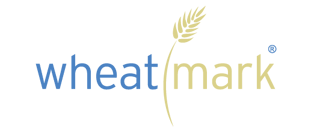The following terms will prove helpful to you before and while publishing with Wheatmark. These terms are specific to the way Wheatmark operates and may not apply to other publishers.
Adobe PDF: The file format read by the Adobe Acrobat Reader. PDF is the file format for presenting documents independent of the original software they were created in. Wheatmark uses the PDF file format to show authors the exact page layout of their book as it will be printed. You must have Adobe Acrobat Reader installed on your computer to open and print a PDF file.
Author copies: The initial set of free books an author receives upon the book’s publication.
Back matter: Printed material found in the back of the book after the main section of the book. This includes the appendix, the bibliography, the index, and other related matter.
Baker & Taylor: One of the largest wholesalers of books in the United States. Wheatmark books are available to retailers through Baker & Taylor and are returnable.
Bar code: The bar code is the ISBN transferred into a scannable image that identifies the title, author, and publisher of the book. Wheatmark books have an industry standard EAN bar code on the back cover that can include the book’s retail price.
Bertram’s: The United Kingdom’s premier wholesaler of books. Most Wheatmark books are available in the UK through Bertram’s on a nonreturnable basis.
Binding: The back and front covers and the spine that hold the pages of the book together. Wheatmark books are perfect bound.
Book Production Files: Upon request Wheatmark will create a CD-ROM disk with the final layout of an author’s book’s interior as a high-resolution Adobe PDF and the final cover design as a high-resolution TIFF. The files will be print ready, with the Wheatmark logo and ISBN removed.
Book signing: An event where the author reads, talks about, or discusses his/her book, providing an opportunity for potential buyers to meet the author and to have a copy of the book personally signed, usually held at bookstores or book fairs.
Books-in-Print (Bowker): The most comprehensive bibliographic database of published books, provided by Bowker to retailers and libraries.
Camera-ready copy: The manuscript fully typeset and prepared for reproduction as is. No—or minimal—modification is required by the printer. Wheatmark, being a publisher and not a printer, does not accept camera-ready submissions.
Cataloging-in-Publication data (CIP): Bibliographic catalog record prepared based on the subject and content of your book, allowing libraries and other book buyers to easily catalog a book.
Clip art: Uncopyrighted drawings and pictures intended to be cut and pasted in printed material.
Content change (or author alterations): Any change to the manuscript requested by the author after the submission of the final manuscript. This does not include correcting proofreading errors that may have been missed during Wheatmark’s copyediting & proofreading service.
Copyediting: Copyediting is the correction of punctuation, grammar, and spelling errors in the manuscript. See also Proofreading.
Copyright: A legal notice that protects “original works of authorship” both published and unpublished, that are expressed in a tangible form, but not the ideas themselves. Official copyright registration through the U.S. Copyright Office establishes a public record of your copyright claim and provides you with additional legal protection if your book’s copyright is infringed.
Copyright page: The even-numbered page following the title page that displays copyright notices, publisher information, ISBN, LCCN, and Cataloging-in-Publication data.
Crop marks: Lines or markings on a camera-ready manuscript indicating where the pages will be trimmed after printing.
Direct sales: Selling directly to the public, circumventing traditional distribution channels such as wholesalers, distributors, or retailers.
Discounts—Author’s discount: Authors may purchase additional copies from Wheatmark at the discount of 40% off the minimum retail price. Steeper volume discounts are available for 100+ copies (50% off), 250+ copies (55% off), and 500+ copies (60% off), 1,000 copies (65% off), and for 1,500+ copies (75% off).
Discounts—Standard or regular discount: The discount rate resellers typically receive from mainline publishers, including Wheatmark. At Wheatmark this is typically 55% to wholesalers and 40% to retailers. Books with standard discount rates are often discounted for customers by online retailers like Amazon.com by 20-40%. See “short discount” for rates offered by small and print-on-demand publishers.
Discounts—Short discount: The nonstandard discount rate typically provided to resellers by small publishers and print-on-demand self-publishing companies. The short discount rate is about 30-35% to wholesalers and about 20% to retailers. Books with a short discount are almost never discounted by online retailers like Amazon.com.
Distribution: The channel through which a book reaches the public. Wheatmark books may be sold through distribution (publisher-to-wholesaler-to-retailer-to-customer / publisher-to-retailer-to-customer) or throughdirect sales (publisher-to-customer / author-to-customer).
Distributors: Companies that, for a fee, represent publishers by handling the warehousing and shipping of books to retailers. They sometimes request an exclusive relationship with publishers and serve as the source forwholesalers.
Font: A particular typeface in a specific point size. Footnotes/endnotes: Numbered footnotes are at the bottom of pages they refer to and endnotes are usually either at the end of chapters or at the end of the book.
Foreword: Introductory remarks to the book written by someone other than the author.
Front matter: Printed material found in the front of the book before the actual body copy starts. It includes title and copyright pages, dedication, foreword, preface, table of contents, etc.
Proof / Page and Cover Proof: The typeset composition of pages before book printing, allowing the reader to detect any remaining errors. Wheatmark can provide proofs either electronically (as Adobe PDF files) or as printed page and cover proofs.
Gutter: The white space formed by the inner margins of two facing pages.
Index: The alphabetized list of names or subjects at the end of a nonfiction book that gives page numbers where each entry can be found in the book. An index can only be prepared once the book’s pagination has been finalized.
Ingram Book Company: The largest wholesaler of books in the United States. Most bookstores and retailers have an account with Ingram. Wheatmark books are available to all retailers through Ingram and arereturnable.
ISBN: International Standard Book Number, a worldwide identification number that is a required element in the book distribution industry. Each format and edition of a book receives its own ISBN.
Justify: Positioned lines of text so that the left and right margins are evenly set down the side of a page.
Layout: The overall design or mock-up of a page, including typeface, headlines, page number, and visuals showing how the page will look when printed.
LCCN: Library of Congress Control Number, a numbering system that lists forthcoming publications. This collection of selected titles is used by most public and private libraries, researchers and bibliographers.
Manuscript: An author’s written material prepared for publication. A manuscript can be in either a handwritten, typewritten, or a digital form. Wheatmark can accept either typewritten (as hardcopies to scan) or digital (on disk) manuscripts.
Margin: The distance between the text and the edge of the page.
Minimum suggested retail price: The price that Wheatmark suggests to the author prior to setting the actual retail price of the book. This minimum price is determined by the number of pages and can be raised at the author’s discretion.
Nonexclusive contract: The publishing agreement with Wheatmark is nonexclusive, meaning that Wheatmark will not become the exclusive rights holder. The author retains all rights, can publish/print elsewhere concurrently, and can cancel publication with Wheatmark at any time.
Offset printing: As opposed to digital print on demand, offset printing is used for print runs over 1,000 copies. Offset printing is much more economical than digital printing.
Online bookstores: Online bookstores where Wheatmark’s books are sold include its own online bookstore, Amazon.com, Barnesandnoble.com, Borders.com, BooksAMillion.com, as well as countless others.
Perfect bound: A binding method that uses plastic glue to bind the loose page leaves to the book cover. All Wheatmark books are perfect bound.
Printers: Companies that print and bind books for publishers. Printers generally do not edit, design, or distribute. Conversely, publishers generally do not print their own books.
Printer’s errors: Mistakes made during the printing process, such as ink blots or smudges on pages.
Print on demand: The technical capability to digitally print and bind books in small quantities–even one at a time–as markets demand. Also called digital printing.
Print Receipts: The payments the publisher receives for the sale of the book, less any returns. Wheatmark’s author royalties are based on publisher’s print receipts.
Proofreading: Once your book has been copyedited, designed, and laid out, a proofreader will check the final copy, correcting any errors missed by you and the copyeditor. The proofreader will also check for any post-layout formatting problems.
Resellers: Companies that buy books with the intent to resell them. These are either wholesalers (like Ingram) who sell to retailers, or retailers (bookstores) that sell to the public.
Retailers: Companies that resell books to the public at or near the retail price. Retailers are generally bookstores, but include any store or organization that sells books. Libraries are also considered retailers in this regard.
Retail price (or list price): The price that is printed on the cover of the book and which is recorded in trade databases. Retailers usually sell books at the retail price, however they are not required to do so. Amazon.com regularly discounts Wheatmark books by about 30%.
Returnability, returns: Whether the book, if unsold, can be returned by the reseller to the publisher for refund. At Wheatmark all books are returnable and authors are not charged either for returned books or for using this service.
Review copies: Books made available to book reviewers either at the author’s or the publisher’s expense. Wheatmark provides free review copies to any legitimate direct review copy requests.
Royalties: The commission paid to the author based on book sales. Wheatmark pays the author 20% of publisher’s print receipts.
Short run: A small quantity of books printed either digitally or offset, typically under 1,000 copies.
Publicist: Someone who customizes promotional materials for a given book; may also assist in arranging public appearances and interviews.
Sans-serif: Typeface that is straight with no serifs or small extensions on letters, generally used for headers. Examples of sans-serif typefaces are Arial, Verdana, and Helvetica.
Serif: The fine line that extends from the top and bottom of letters making them easier to read, used for the body text of a book. Typefaces with serifs include Times New Roman, Times, Garamond, Book Antique, etc.
Spine: The strip of cover between the front and back covers to which the book pages are either sewn or glued. The spine usually displays the book’s title, the author’s name, and the publisher’s logo. Note: Wheatmark books with thin spines (under 80 pages) do not have text on the spine.
Table of contents: The list of chapter headings and their corresponding page numbers in the front matter of a book.
Target audience: An identified group of readers who would most likely be interested in a book’s particular subject matter.
Title page: Odd-numbered page at the beginning of the book that gives the title, subtitle, author’s name, publisher, and place of publication.
Trade books: Paperback or hardcover trade books do NOT include children’s books, textbooks, or mass-market paperbacks. Typical trade trim sizes are between 5 x 8 and 6 x 9 inches, but larger sizes are also available. Wheatmark publishes trade books only.
Trim size: The dimensions of the paper in a bound book.
Typeface: The style of typed letters used for the body text.
Wholesale price: The price at which the publisher sells the book to a reseller. See also “discounts”.
Wholesalers: Companies that handle the resale of books in large quantities and serve booksellers. Wholesalers that carry most Wheatmark books include Ingram Book Company, Baker & Taylor, and Bertram’s.

